
Speak Your Mind
A platform for people to speak their minds and be listened to by trained listeners
team
Christine, Joycelyn, Sylvia, Zioedy
role
User research, wireframing & prototyping,
usability testing
timeline
background
Having met a person who had difficulty sharing their problem, our client came out with a solution for these people to be able to speak with anonymous listeners. The goal was to create a safe place where people could express their emotions rather than a therapy or counselling session going deeper into trauma. To understand how to bring people into his solution, we studied the problem in more depth and came out with design ideas to test on our target users.
4 weeks

problem
As a young Singaporean adult,
I need an avenue to be listened to and speak honestly about my feelings,
because I am dealing with issues that are not accepted by society.
discover
What to find out
We had a brainstorming session to validate the problem and gathered facts about mental health topics. Then we defined the focus of what we wanted to understand from the users, which are :
Methods
How people cope with their stress or issues
Barriers
What keep them from speaking to someone
Issues
What affects their mental health the most
Thoughts
What they think about Speak Your Mind
How to find out
Competitive Analysis
We listed direct and indirect competitors from social media platforms to professional help services to assess the market gap and opportunity.


Twitter Space and Clubhouse connect people with similar interest and allow them to express themselves


Youper and Talk your heart out are online counseling and therapy platform that provide professional help
User Survey
We posted a google form with closed and open-ended questions across multiple platforms and received 67 responses.
1 in 2
users sought help from professionals/apps
35%
who tried mental health support rated the effectiveness to be
≤5/10
1 in 3
expressed discomfort seeking mental health support
Issues that caused the most impact on users' mental health are :
1. Interpersonal
e.g. getting married, experiencing a breakup or divorce, toxic relationships
2. Employment
e.g. long-term unemployment, work demand, career switch
3. Personal
e.g. Illness or injury, pregnancy and parenting, experiencing trauma
"I value my closer relationships, and when issues crop up in these relationships, they usually affect me the worst..."
User Interview
To gather more qualitative data, we interviewed five users from various backgrounds, three were female, and two were male.
The common barriers that kept them from speaking out are :
1. Responses
People might judge me or give me responses that weren't my expectation
2. Cost
Mental health professionals tend to charge a higher fee for their services
Their consideration of speaking to someone are :
1. Building rapport
Able to establish a deep relationship through communication and finding common ground
2. Goal of getting help
Every user has their own need when speaking to someone. For example, some users want to be heard, and some want to gain a new perspective.
3. Qualification
Users want to ensure that the listeners are professional, emotionally intelligent or qualified to be listeners.
"If I'm going into a space, I want to know what's your experience as a listener and who you are as a listener."
define
Who the target users are
We defined the user personas to describe best the target users and their journey of speaking to someone.

Inquisitive Iris
Age 28, Single
Media professional
To manage her daily work stress, she needs an inexpensive, accessible way of talking to someone to help reframe her perspective. Unfortunately, while seeking advice from online support groups, she is overwhelmed by judgmental voices and condemnation.

Purposeful Paul
Age 30, Single
Civil Servant
Having been through some controversial issues, he dislikes being told what to do by others. However, he believes there is a time and a place for solutions. All he needs is clarity of thought, but he may only confide in certain people at certain times.

So, how might investing in self-care be an opportunity for people who are wary of letting their guard down?
design
How to solve the problem
We suggested a mobile web as a solution for the early outreach strategy. Users can access it on the go and instantly without downloading it. We sketched out some ideas before deciding which features to pursue.

Tiered Listeners
Most users were concerned about how much they had to pay for professional help. Hence we suggested having professional and non-professional listeners as a lower-cost option. The non-professionals are the guided listener, which we will explain further below.
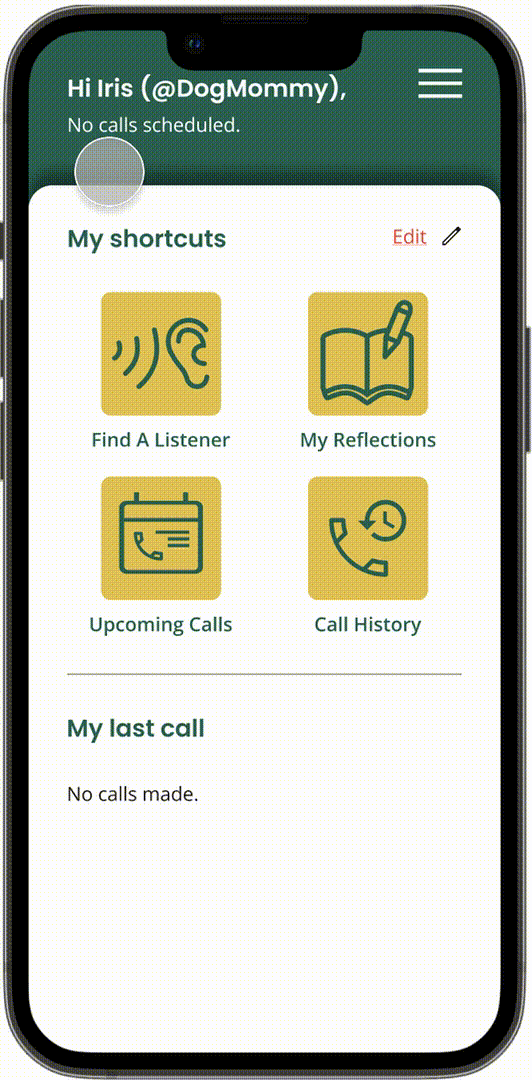
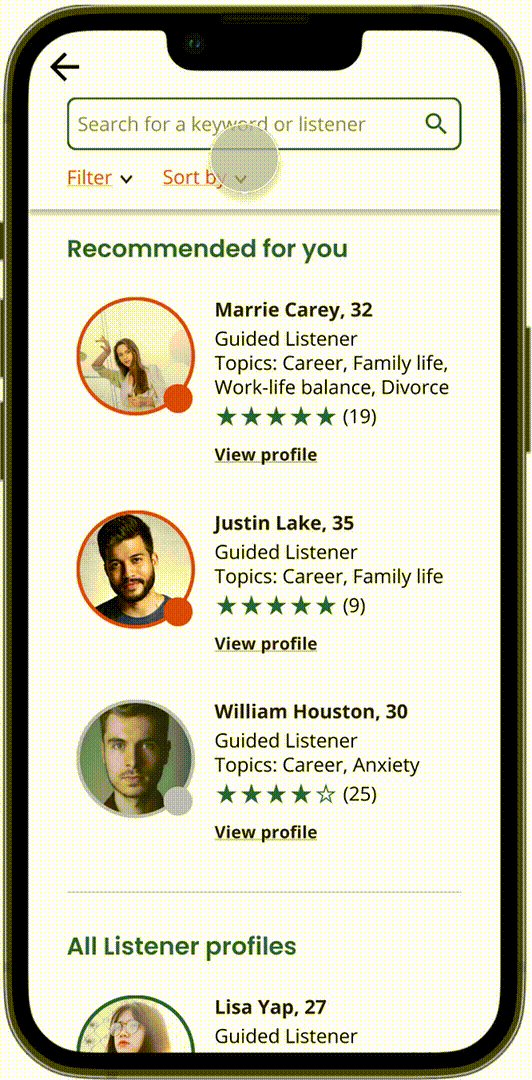
Listener’s profile
Users mentioned that they want a listener they can feel relatable to, someone that is emotionally intelligent.
We proposed that the speaker and the listener should build rapport by sharing a common ground. The listener profiles should include the listeners' biography, experiences, topics they are interested in, and reviews from other users.
Guided Listeners, topics & goals
Users showed their concerns about speaking to non-professionals (guided listeners) as they might not be qualified to be a listener. So, for guided listeners to keep the session productive, there would be sets of question cards to scope the conversation.
As the speaker chooses topics and the goal of the conversation, it generates the right questions that help listeners understand users' needs, guiding the conversation in the right direction.
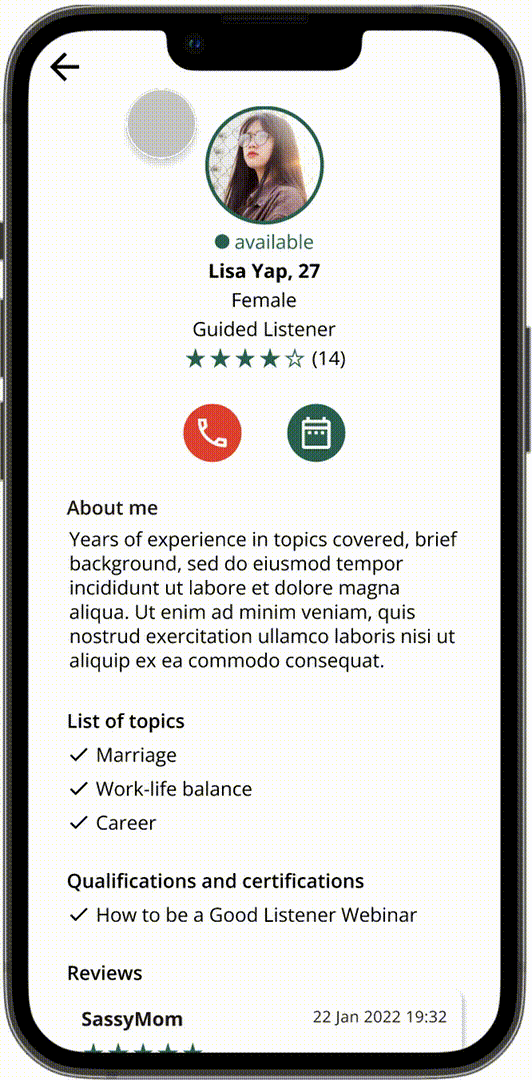
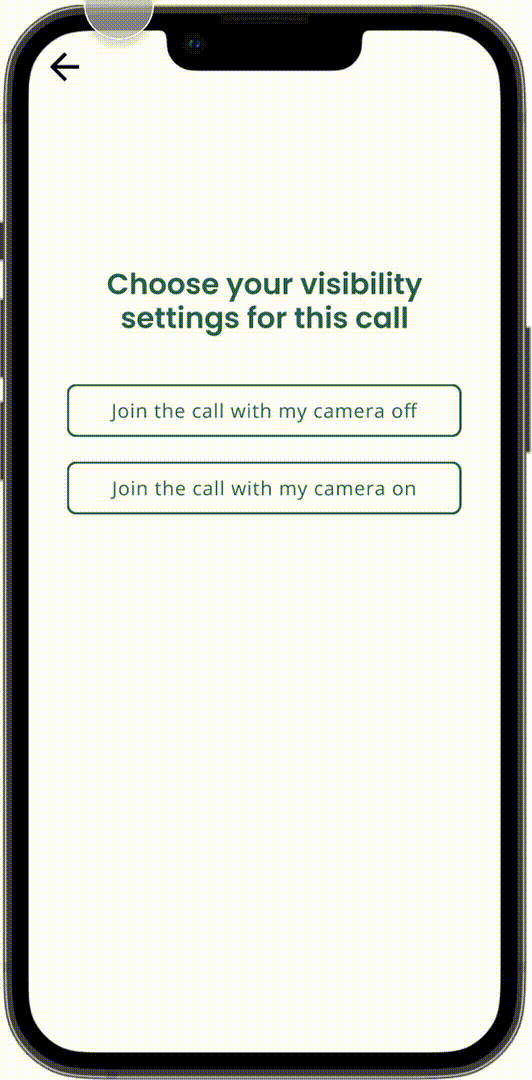
Video call & Chat
It is essential in a professional setting to create a comfortable environment for both the counsellor/ therapist and the client, and things like confidentiality.
Depending on the comfort level of both listener and speaker, we suggested an option to turn on/off the camera for video calls and chat functions.
Reflection & Journaling
Some users mentioned that one of the self-coping mechanisms they used to express themselves was Journaling because It helped them organise their thoughts. Therefore, we highly recommend journaling and writing a reflection after each call so that users can document their experiences and feelings and achieve clarity of thoughts.
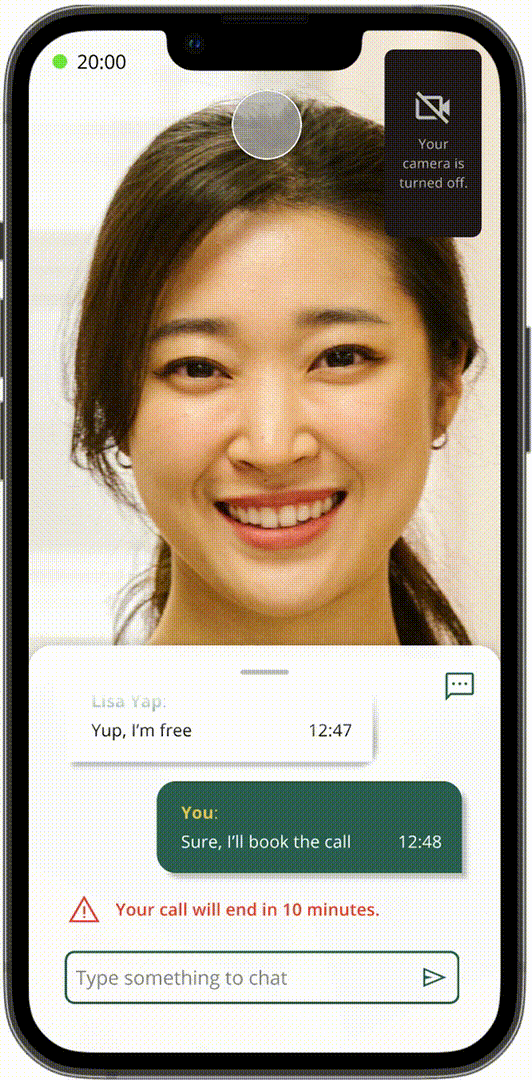
result
We conducted usability testing on five users,
Three users rated 7.5/10 on the likelihood of using this service provided listeners are appropriately screened.
Two users were unsure as they needed more information on the effectiveness of guided listeners.
The client identified five major opportunities through the research insights, design ideas and prototype and developed the iterations of the prototype for further testing.
Where we can improve
We should have interviewed more users who don’t have a mental support system where they could rely on and share their struggles and issues to get a better perspective on how “Speak Your Mind” could contribute to their mental health.
What next
The scope of the project is limited to only the speakers, so further research is needed to identify the listeners' needs, goals, and challenges and what is the best screening process for the listeners.